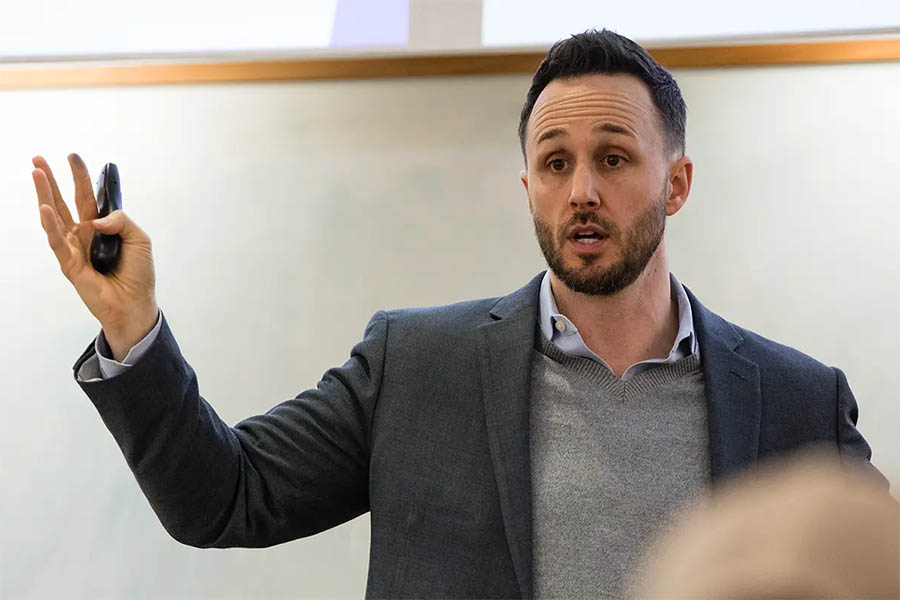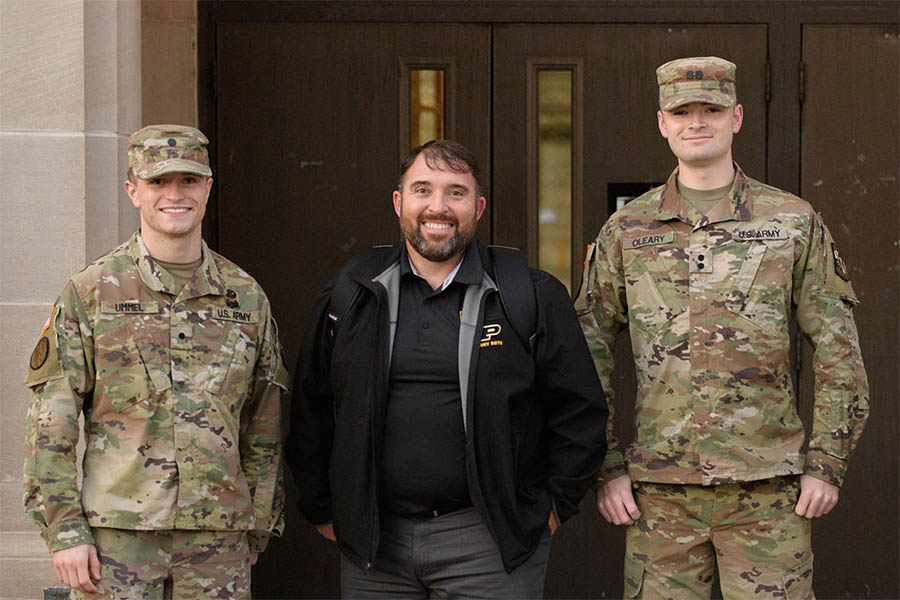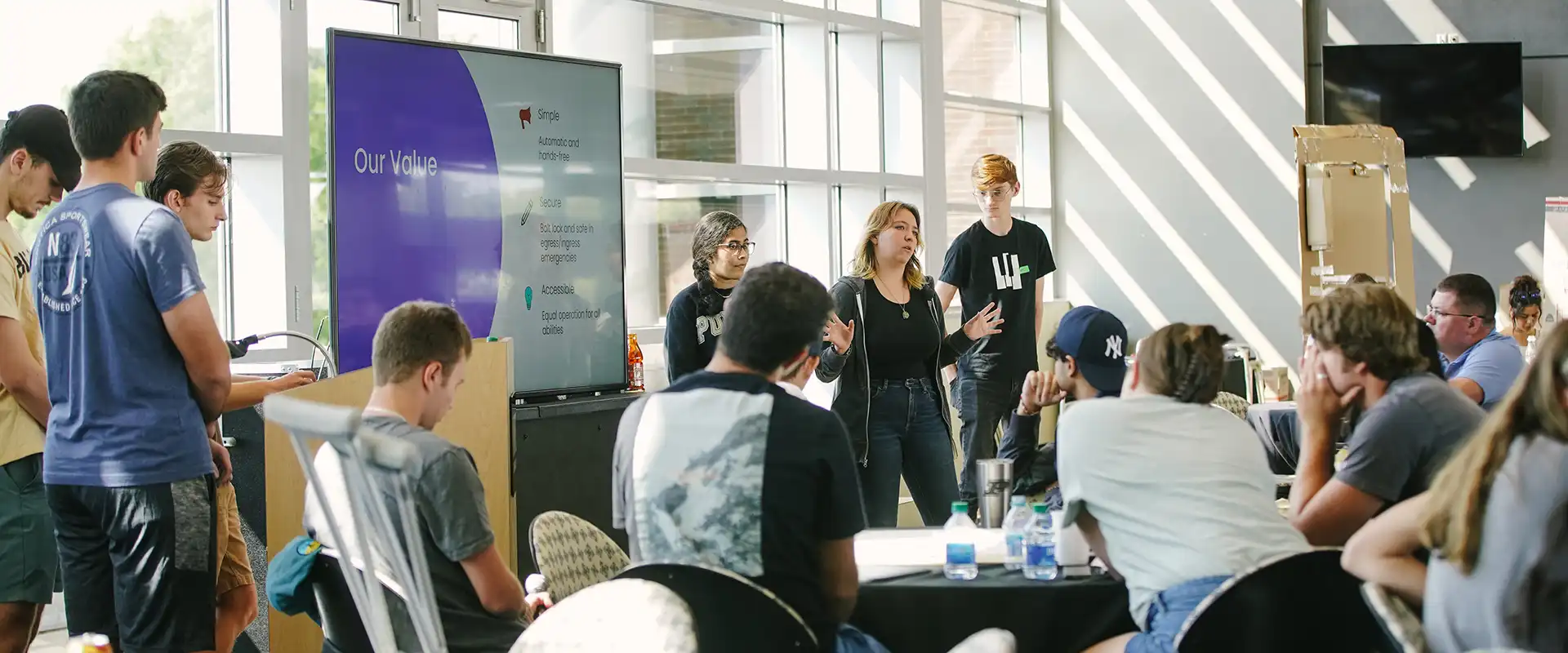
Design Thinking for Good - IBE students team with Industrial Design students for Innovation Hackathon
Purdue University continues to rank among the top 10 most innovative schools in the nation, due in part to business-research partnerships that address real-world needs while producing job-ready graduates.
In that spirit, the Integrated Business and Engineering (IBE) program at Purdue’s School of Business recently partnered with the Industrial Design (ID) program from the College of Liberal Arts to host an IBE + ID Innovation Hackathon at the Shively Club in Ross-Ade Stadium.
dormakaba, one of the top three companies for access control and securing solutions in the global market, co-sponsored the event, providing funding, a real-world problem statement addressing aspects of disability access in the modern world, 10 company representatives acting as coaches, mentors and judges, as well as prizes for winning teams.
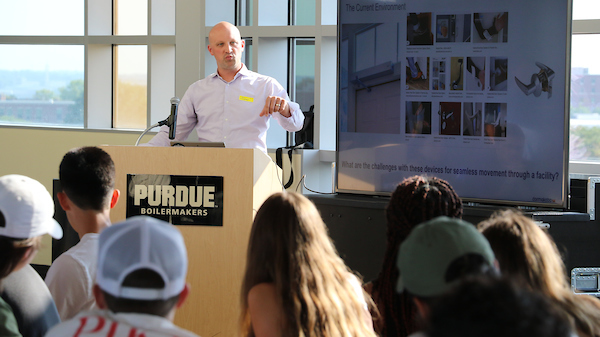
Justin Crotzer, a Purdue engineering alumnus and senior vice president of global access hardware solutions and product development at dormakaba Americas, led his company’s involvement in the hackathon. “We took on the challenge and leaned into it,” he says. “The level of meaningfulness behind supporting the school and developing the pipeline of talent coming to dormakaba is critical for us.”
“The goal of this hackathon was to give students a real-world opportunity to collaborate across disciplines and foster new perspectives of thinking,” says Ryan Case, director of the IBE program. “We want this to become part of an annual, immersive-learning event that spreads a culture of innovation on the Purdue campus.”
Under the direction of TJ Kim, a Purdue professor of industrial design and product development who created the Hackathon’s “Design Thinking” platform, ID seniors led IBE sophomores divided across 10 teams. They embarked on a process that included hands-on empathy research, bodystorming, affinity mapping, sketch-noting ideas, cardboard prototyping, and role playing prior to presenting their products 12 hours later in five-minute presentations.
Kim’s platform aims to bring together universities, communities, and industries from around the world to take on real-world challenges. It emphasizes “design by action,” as well as pursuing projects across different disciplines, expertise, and great distances by using the latest technology for collaborative work that demonstrates a more effective and efficient design process.
“The industrial design students practiced not only their technical skill sets, but also soft skills such as communication, collaboration, and leadership,” Kim says. “This is a perfect example of peer-to-peer learning, where students can learn from each other and share their knowledge.”
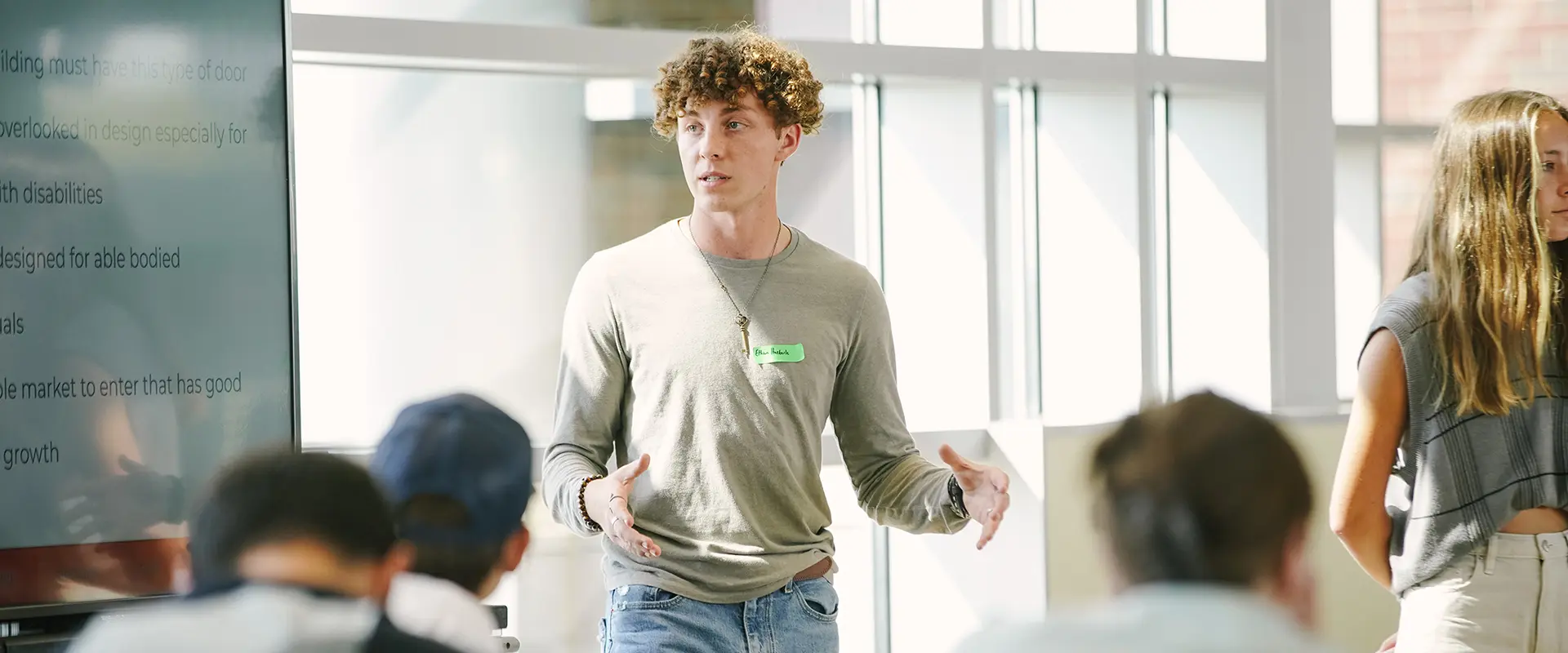
“Going in, our students didn’t know about design thinking, so it worked well to have industrial design students help lead them through the process,” says Dr. Dilip Chhajed, associate dean for online programs and strategic initiatives and executive director of the IBE program. “It’s impressive what they pulled together given the time constraints.”
Chhajed says IBE students learn about real companies like dormakaba as part of the curriculum. “The IBE program goes beyond coursework to focus on integrating experiences and experiential learning — opportunities to use a combination of technology and business skills to solve real-world problems,” he says. “The hackathon is a great example of that.”
Providing secure access to buildings and rooms with over 150 years’ experience and millions of products installed worldwide, dormakaba offers a comprehensive portfolio of products, solutions, and services for everything related to doors and secure access for hotels, healthcare, education, shops, lodging, entertainment facilities, sports centers, airports, at home or in the office.
“In this year’s hackathon, we were asked to design doors and entrances smarter and safer for people with disabilities so that they can access public spaces without help from others,” Kim says. “This is based on the universal design principle in which the benefits we create for those demographics also bring value to ordinary people.”

Teams worked on design intents and solutions, learned innovative design methods to accelerate the development process, and used technology-based design tools to build visible and tangible objects.
“It was important for us to bring in engineers and product managers so that both our employees and the students could see how the curriculum is supporting what we do in the field,” Crotzer says. “There is no better way to provide a successful output than to have people well-conditioned for the workforce whenever they're done with school.”
“Visualizing the product concept was a vital tool for students to communicate and represent new product ideas,” says Chhajed. “Knowing the language of design was also important to understanding communication and working together across different disciplines.”
Case says the IBE students also brought a business perspective to the process. “They did a lot of data analysis and took a ‘Shark Tank’ mindset into addressing the problem,” he says. “They looked at cost effectiveness, competitors’ products, marketing, and other business issues.”
The team dubbed “B.M. Claws” won for both the overall highest score and most innovative solution for their product called “Door Roller.” The team was led by ID student Moriah Martin and comprised of IBE students Drew Behl, Samantha Bloom, Liam Kauffman, Hey Cheuk Lo, Bora Schrom, and Wesam Sidani.
Taking the prize for the greatest business value was “The Boxcutters” team and their product “Dormakable.” The team was led by ID student Niles James Mylin and comprised of IBE students Varun Anand, Grant Bolotin, Enzo Pereira Martelletto, and Marisa Weygandt.
“I believe our open mindedness helped us secure the win,” says team member Schrom. “When we first brainstormed our winning idea, it was low on the list and close to getting scrapped. However, through communication, discussions, and everyone willing to listen, we realized the idea had potential. We knew if we didn’t go above and beyond and add unique aspects to our presentation, our idea wouldn’t stand out, so we included a CAD prototype of our product as well as some sample code.”
“The thing that impressed me the most about the teams’ presentations was watching them interact and dive headfirst into devising solutions,” says Anne Sorenson, talent coordinator for dormakaba Americas. “I’m excited to continue to grow our collaboration with the Purdue IBE program and hope to see internship applications from many of these talented students.”
Crotzer says the winning teams “connected the dots” with a strong focus on business value and innovation, as well as empathy for helping people with disabilities. “It was clear that they understood their challenge and provided solutions that we should truly consider,” he says. “Their unhinged connection from the industry allows them to freely think and approach problems, which is truly powerful for us.”

